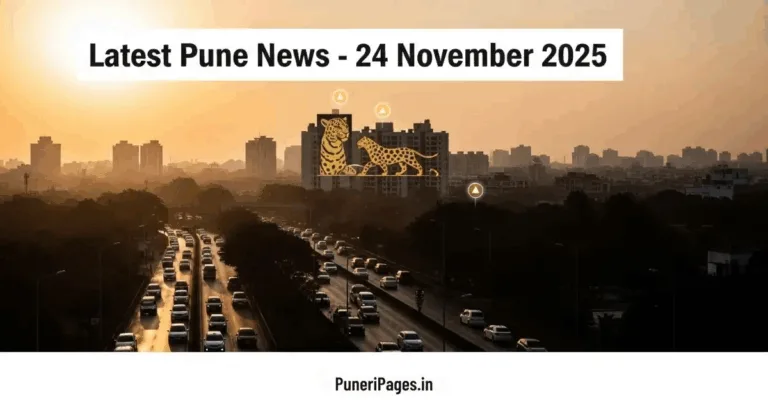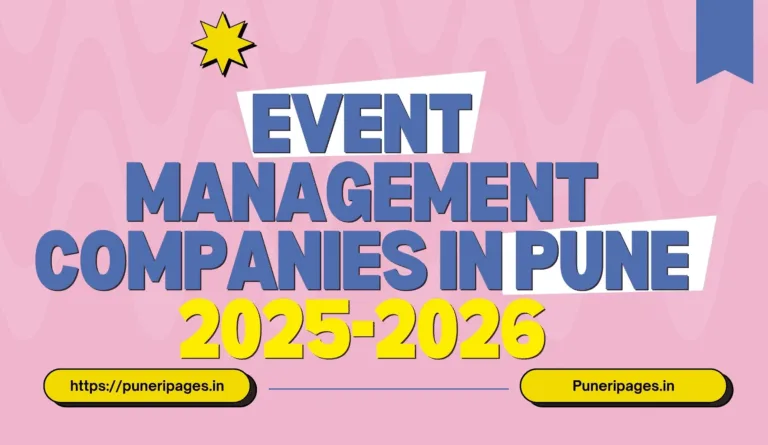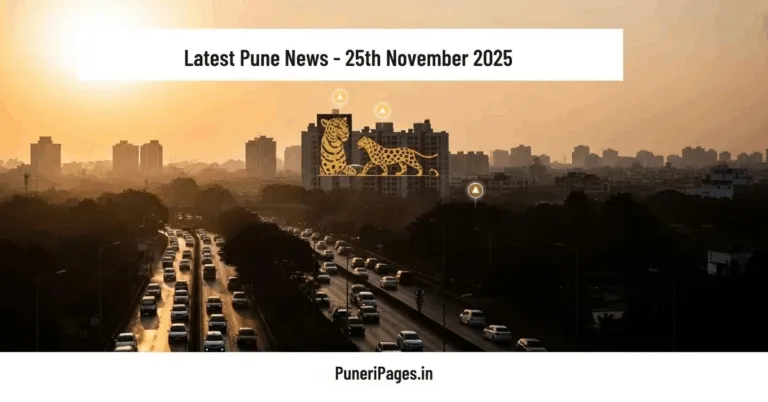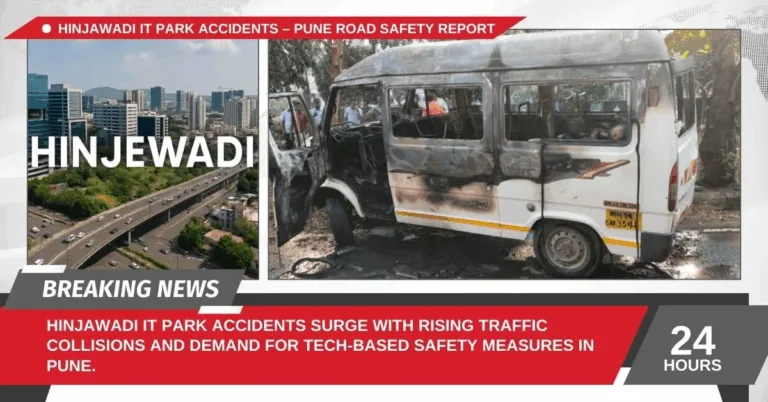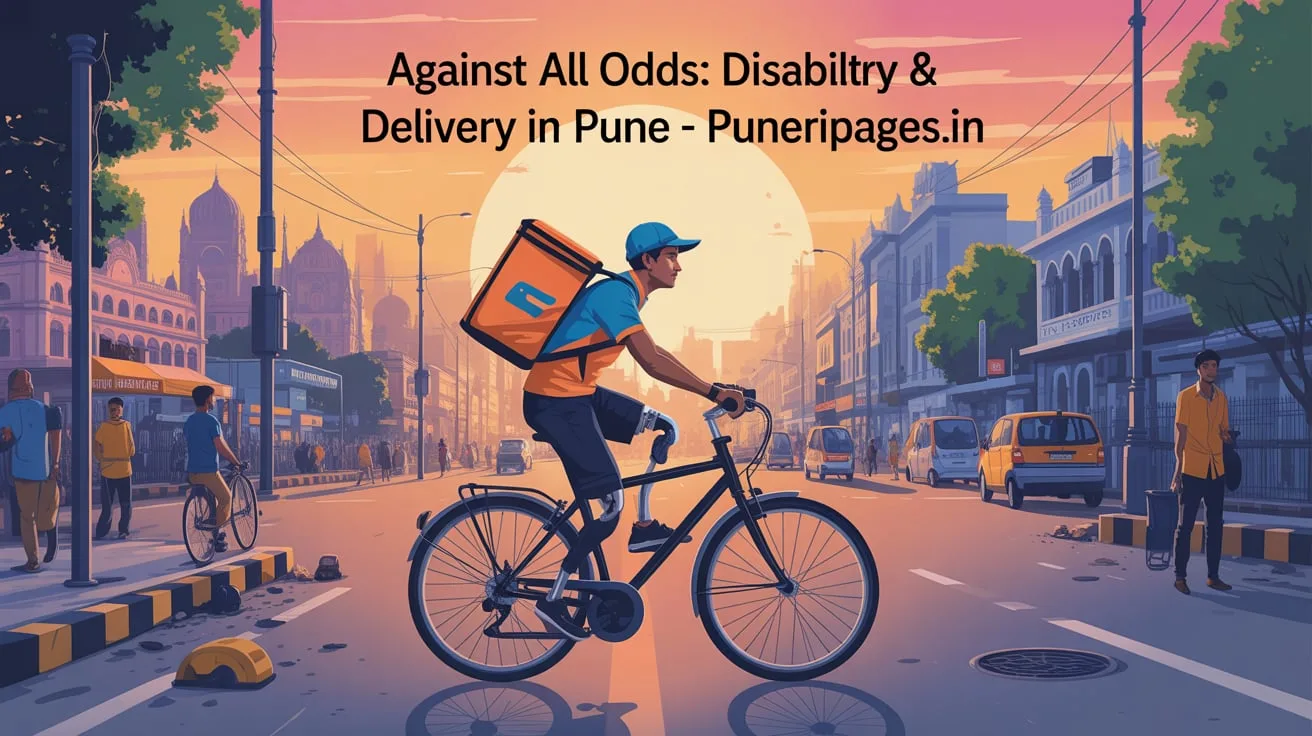
Against All Odds: A Pune delivery partner shows what true resilience looks like. Read the full story on puneripages.in
Table of Contents
In the bustling lanes of Pune, where food and essentials are delivered with the tap of a screen, a silent but powerful story of resilience is unfolding. Dozens of delivery partners with disabilities—physical, hearing, or locomotor—brave a system that isn’t built for them. From navigating potholes with prosthetic limbs to communicating with customers despite speech or hearing challenges, these individuals are redefining what it means to deliver—literally and metaphorically—against all odds.
This in-depth blog explores their daily experiences, systemic challenges, interactions with customers, gaps in technological accessibility, and the quiet revolution they are leading in Pune’s gig economy.
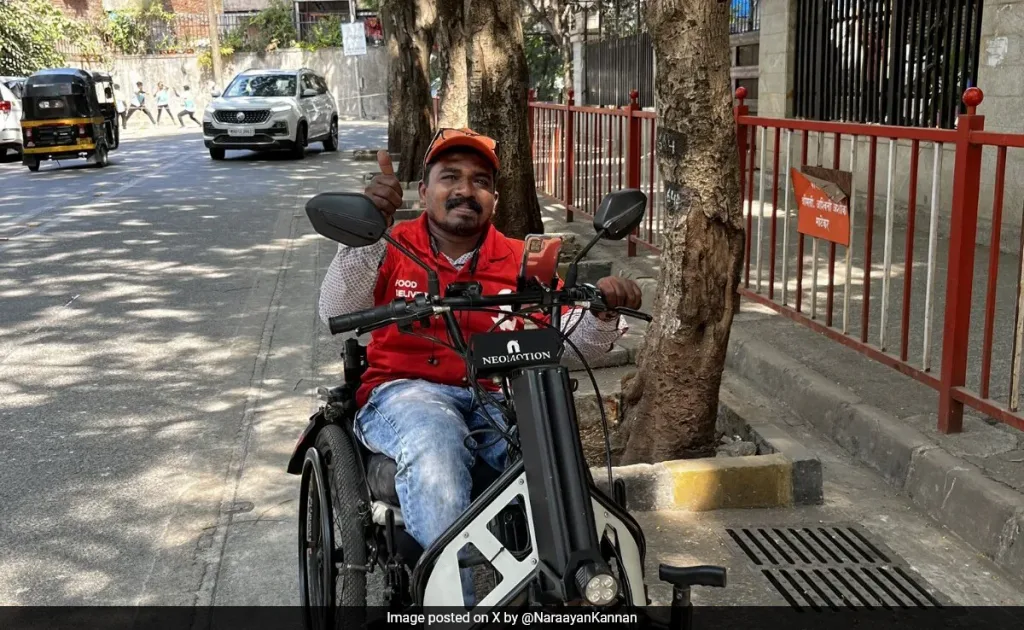
1. The Pune Gig Economy Landscape
Pune, one of India’s fastest-growing metro regions, has a massive gig workforce catering to its tech parks, residential zones, and colleges. Platforms like Zomato, Swiggy, and Blinkit rely on thousands of partners, among whom is a small but significant population of persons with disabilities (PwDs). Most of these delivery workers have signed up hoping for flexible hours, income autonomy, and dignity.
2. Stories of Strength:
Faces Behind the Numbers Meet Suraj Shinde, a delivery partner with a prosthetic limb who rides 80–100 km daily. Or Neeraj (name changed), who is hearing-impaired but uses a text-to-speech app to interact with customers. These individuals are breaking stereotypes and showing how mobility doesn’t only come from muscles but also from sheer willpower.
3. Accessibility vs. Reality:
Tech Platform Gaps Although many apps promote inclusivity, delivery partners reveal that the backend still lacks features that support PwDs. For example:
- Voice-based navigation is ineffective for hearing-impaired users.
- Few apps allow for accessibility customization like screen-readers or font resizing.
- Helpline numbers rarely have staff trained in Indian Sign Language or disability etiquette.
4. Customer Behaviour:
Kindness and Ignorance While some customers show compassion—offering water or helping with staircases—others complain about delayed delivery, unaware of the challenges faced by the delivery partner.
A common sentiment from partners: “We don’t want sympathy. We want understanding.”
5. Roadblocks: Urban Infrastructure and Physical Hazards
- Potholes and uneven footpaths make wheelchair access or even crutch support risky.
- Absence of resting spaces or toilets is worse for PwDs with additional health concerns.
- Monsoon season multiplies risks of slipping, falling, or damaging assistive devices.
6. Gender Lens:
Women with Disabilities in Delivery Roles A very small segment, but increasingly present, are women like Rani, a single mother with partial vision loss who delivers food during afternoon slots. Safety concerns, social stigma, and lack of washroom facilities deter many, but pioneers like her are changing perceptions.
7. Policy & Company Response:
What’s Being Done (and What Isn’t) While the government mandates 4% reservation in jobs for PwDs, the gig economy operates in a legal grey zone. Platforms claim inclusivity but offer few on-ground support systems
- No special insurance for assistive device damage
- No differentiated ratings algorithm that accounts for special conditions
- No formal grievance redressal mechanisms for discrimination
8. NGO and Volunteer Interventions
Groups like Enable India and Prahar offer mobility devices, train gig workers on handling rude customers, and teach tech navigation. But their reach is limited, and much more needs to be institutionalized.
9. Building a More Inclusive Gig Future
- Apps must integrate accessible tech (text-based directions, AI-powered language tools)
- Delivery gear (bags, jackets) should be adapted for various disabilities
- Regular sensitization of customers via app banners and push messages
10. Quotes from the Ground:
- “We are not just earning for ourselves. We’re proving we’re no less.” – Sunil, paraplegic delivery partner
- “Even just a smile from a customer changes our whole day.” – Reena, visually-impaired partner
11. Conclusion:
The next time you receive a package, consider the journey behind it. For a delivery partner with a disability, every step is a story of strength. Pune has a chance to become India’s most inclusive gig city—if we listen, understand, and act.
FAQs:
How can Pune improve infrastructure for PwDs? – By ensuring smoother footpaths, installing resting benches, and adding accessible public toilets.
How many delivery workers with disabilities operate in Pune? – Exact figures are unavailable, but NGOs estimate hundreds actively work with apps like Swiggy and Zomato.
Are platforms like Swiggy and Zomato accessible for PwDs? – Partially. Most apps lack robust accessibility features such as screen readers and custom input methods.
Do customers know if their delivery partner has a disability? – No. Delivery apps do not disclose such information.
Are there any special benefits for disabled delivery workers? – Not officially. Some NGOs offer support, but company-level incentives are rare.
What legal protections exist for such workers? – As gig workers, they fall outside most conventional labour protections, though general disability rights apply.
How can customers be more supportive? – Being patient, offering help when needed, and avoiding negative ratings for delays caused by accessibility challenges.
Are women with disabilities also part of the delivery workforce? – Yes, although their numbers are lower due to added safety and infrastructural concerns.
What kind of training is available for PwDs in gig roles? – NGOs like Enable India offer sessions on app usage, communication, and managing stress.
Do tech platforms plan to improve accessibility? – There are ongoing discussions, but changes have been slow and inconsistent.
